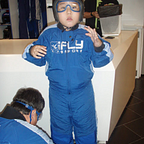National Museum of Fine Arts
I first went to the National Museum of Fine Arts (Pambansang Museo ng Sining) when I was a grade school student as part of a school trip. The museum is “home to 29 galleries and hallway exhibitions of 19th century Filipino masters, National Artists, leading modern painters, sculptors, and printmakers”. In this blog, I will discuss the following in turn: (1) history; and (2) my highlights of its pieces of work.
History of the building. Its address is Padre Burgos Ave, Ermita, Manila, 1000 Metro Manila. The National Museum of Fine Arts we have today was the old legislative building. And the museum in the present has kept some parts of the old legislative building how it originally was, like the old Senate Session Hall (Layug, n.d.). The building itself is a historical treasure. Ralph Harrington Doane designed the building; and Antonio Mañalac Toledo and Juan M. Arellano built it between 1918–1926. Doane, with the assistance of Toledo, designed the building originally as the National Library (National Museum of Fine Arts, n.d.). The building began its construction in 1918, but it was delayed for lack of funds. Because of that, it was decided to become the Legislative Building.
“In February 1945 the Japanese forces used the [legislative] building and its premises as their stronghold and modified it with their defensive installations…” (National Museum of Fine Arts, n.d.). The building and its outside area was a battlefield, turned into a fortress that was placed with obstacles, roadblocks, trenches, pillboxes and barbed wires. For several days until February 27, the American forces bombarded the building with artillery fire; this damaged the north and south wings, collapsing parts of the building. This was during the American liberation of Manila in 1945 .
The building was rebuilt in 1949. How it was structured was retained, but it was less ornate or less designed with minute details.
The pediment (the triangular upper part of the front of a building, surmounting a portico of columns) of sculptures depicting “Inang Bayan” surrounded by Greek deities, meaning to “emphasizes grandeur and nationalism, and ennobles the edifice” (National Museum of Fine Arts, n.d.).
On September 30, 2010, by virtue of Republic Act 10096 vesting the power to declare historical landmarks to the National Historical Commission of the Philippines (NHCP), the building was declared as a National Historical Landmark under Resolution №8 dated September 30, 2010. The building has been a place for various political historical milestones of the country i.e. Constitutional Convention in 1934; inauguration of President Manuel L. Quezon of the Commonwealth government in 1935, Jose P. Laurel during the Japanese-sponsored government in 1943, and Manuel Roxas of the Commonwealth government in 1946.
From the many pieces of art, a highlight is Felix Resureccion Hidalgo’s painting Las Virgenes Cristianas Expuestas al Populacho (The Christian Virgins Exposed to the Populace). The given description of this painting is that it is a “landmark painting” depicting the persecution of Christians in Ancient Rome. The setting of this painting is in a public area. This showed a group of boorish looking males messing and toying with the tied up naked females, one of whom is seated in the ground, with her head bowed.
Juan Luna’s Spoliarium is another highlight of mine because of how unforgettable it is. It’s his most enormous artwork in the Philippines. This monumental work of art won the gold medal during the 1884 Madrid Exposition of Fine Arts. Another is Simón Flores y de la Rosa’s Alimentando Pollos (Feeding Chickens) 1896 oil painting on canvas. It’s quite a rare, extant piece because he mostly paints religious art and portraits most of the time. I also liked how the building’s designed with statues and sculptures. Its architecture is similar to a Roman temple, having parts like pediment, stylobate (stair steps), pillars.
Sources
- National Museum of Fine Arts. (n.d.). National Museum of the Philippines. Retrieved December 8, 2022, from https://www.nationalmuseum.gov.ph/our-museums/national-museum-of-fine-arts/
- Layug, B. (n.d.). Old Senate Session Hall (National Museum of Fine Arts, Manila). Benjielayug. http://benjielayug.com/2022/04/old-senate-session-hall-national-museum-of-fine-arts-manila.html#:~:text=The%20old%20Senate%20Session%20Hall,a%20high%2Dceiling%20reading%20room.
